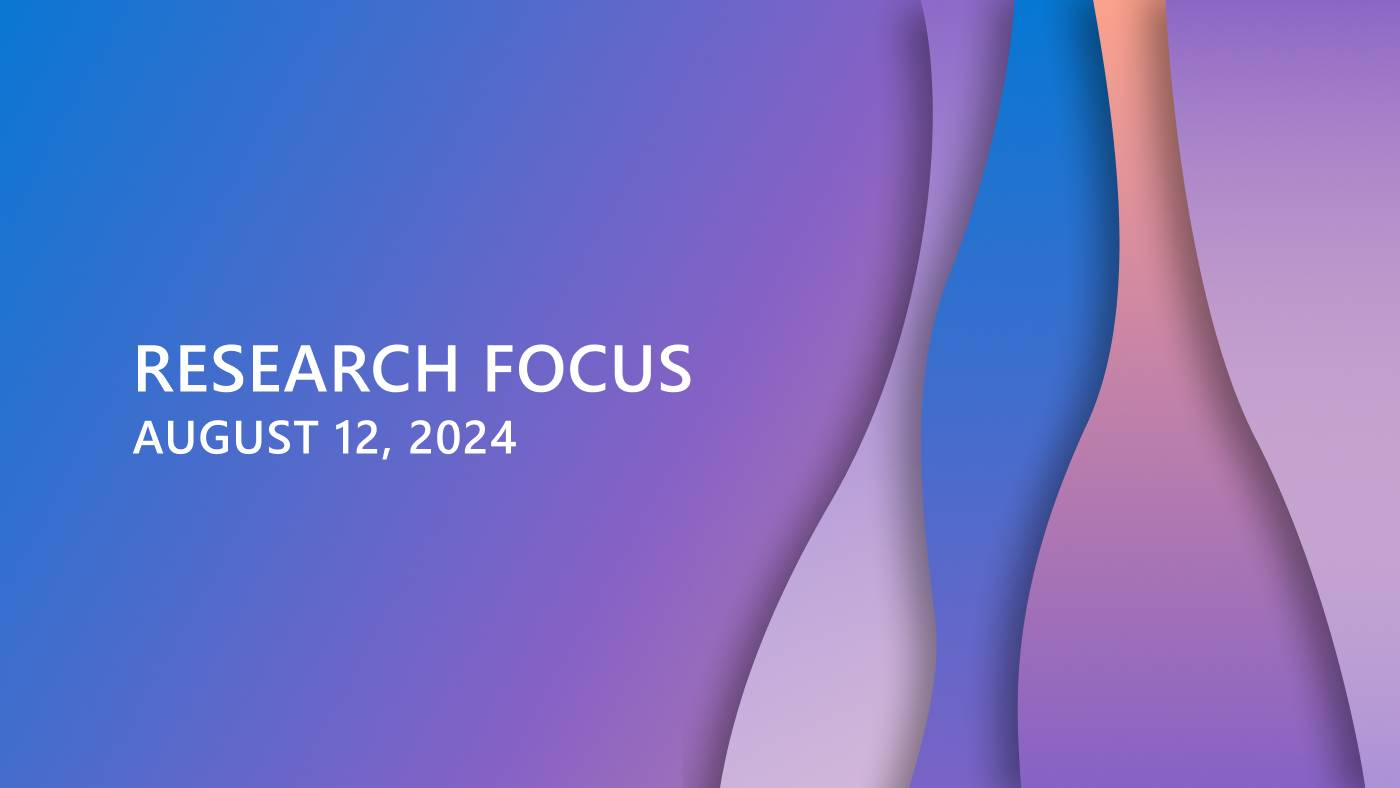包阅导读总结
1. 关键词:Microsoft、Research Focus、AI、Digital Pathology、Cloud Infrastructure
2. 总结:本文是微软 2024 年 8 月 12 日这一周的研究聚焦,涵盖了 9 月 3 日的研究论坛注册信息,以及在数字病理学、对开发者的 AI 支持、云 AI 基础设施可靠性等方面的新研究成果。
3. 主要内容:
– 研究论坛活动:
– 9 月 3 日有微软研究论坛活动,可了解多模态 AI 模型等最新成果,注册后可参与直播聊天和获取更多资源。
– 数字病理学研究:
– 与Providence 和 UW 合作推出首个全切片病理学基础模型 Prov-GigaPath,助力临床研究。
– 针对开发者的 AI 支持研究:
– 研究开发者对 AI 集成到工作流程中的愿望和担忧,为产品团队和领导者提供见解。
– 云 AI 基础设施可靠性研究:
– 推出 SuperBench 主动验证系统,减轻硬件冗余导致的隐藏降级,已在 Azure 成功部署。
– 虚拟会议中的参与研究:
– 探索虚拟会议中影响参与的因素,揭示性别、工作级别等方面的差异和心理安全的影响。
思维导图:
文章地址:https://www.microsoft.com/en-us/research/blog/research-focus-week-of-august-12-2024/
文章来源:microsoft.com
作者:Brenda Potts
发布时间:2024/8/14 16:00
语言:英文
总字数:793字
预计阅读时间:4分钟
评分:86分
标签:人工智能研究,微软研究论坛,开发者工具,云人工智能基础设施,虚拟会议
以下为原文内容
本内容来源于用户推荐转载,旨在分享知识与观点,如有侵权请联系删除 联系邮箱 media@ilingban.com
Welcome to Research Focus, a series of blog posts that highlights notable publications, events, code/datasets, new hires and other milestones from across the research community at Microsoft.

EVENT
Register now for Research Forum on September 3
Discover what’s next in the world of AI at Microsoft Research Forum (opens in new tab), an event series that explores recent research advances, bold new ideas, and important discussions with the global research community.
In Episode 4, you’ll learn about the latest multimodal AI models, advanced benchmarks for AI evaluation and model self-improvement, and an entirely new kind of computer for AI inference and hard optimization. Discover how these research breakthroughs and more can help advance everything from weather prediction to materials design.
Your one-time registration includes access to our live chat with researchers on the event day and additional resources to dive into the research.
Episode 4 will air Tuesday, September 3 at 9:00 AM Pacific Time.
GigaPath: Whole-Slide Foundation Model for Digital Pathology
Digital pathology helps decode tumor microenvironments for precision immunotherapy. In joint work with Providence and UW, we’re sharing Prov-GigaPath, the first whole-slide pathology foundation model, for advancing clinical research.
Opens in a new tab
NEW RESEARCH
Towards Effective AI Support for Developers: A Survey of Desires and Concerns
Talking to customers provides important insights into their challenges as well as what they love. This helps identify innovative and creative ways of solving problems (without creating new ones) and guards against ruining workflows that customers actually like. However, many AI-related development tools are currently being built without consulting developers.
In a recent paper: Towards Effective AI Support for Developers: A Survey of Desires and Concerns, researchers from Microsoft explore developers’ perspectives on AI integration in their workflows. This study reveals developers’ top desires for AI assistance along with their major concerns. The findings of this comprehensive survey among 791 Microsoft developers help the researchers identify key areas where AI can enhance productivity and how to address developers’ concerns. The findings provide actionable insights for product teams and leaders to create AI tools that truly support developers’ needs.
NEW RESEARCH
SuperBench: Improving Cloud AI Infrastructure Reliability with Proactive Validation
Cloud service providers have used geographical redundancies in hardware to ensure availability of their cloud infrastructure for years. However, for AI workloads, these redundancies can inadvertently lead to hidden degradation, also known as “gray failure.” This can reduce end-to-end performance and conceal performance issues, which complicates root cause analysis for failures and regressions.
In a recent paper: SuperBench: Improving Cloud AI Infrastructure Reliability with Proactive Validation (opens in new tab), Microsoft researchers and Azure cloud engineers introduce a proactive validation system specifically for AI infrastructure that mitigates hidden degradation caused by hardware redundancies . The paper, which won a “best paper” award at USENIX ATC (opens in new tab), outlines SuperBench’s comprehensive benchmark suite, capable of evaluating individual hardware components and representing most real AI workloads. It includes a validator, which learns benchmark criteria to clearly pinpoint defective components, and a selector, which balances validation time and issue-related penalties, enabling optimal timing for validation execution with a tailored subset of benchmarks. Testbed evaluation and simulation show SuperBench can increase the mean time between incidents by up to 22.61x. SuperBench has been successfully deployed in Azure production, validating hundreds of thousands of GPUs over the last two years.
NEW RESEARCH
Virtual Voices: Exploring Individual Differences in Written and Verbal Participation in Meetings
A key component of team performance is participation among group members. Workplace meetings provide a common stage for such participation. But with the shift to remote work, many meetings are conducted virtually. In such meetings, chat offers an alternate avenue of participation, in which attendees can synchronously contribute to the conversation through writing.
In a recent paper: Virtual Voices: Exploring Individual Differences in Written and Verbal Participation in Meetings (opens in new tab), researchers from Microsoft and external colleagues explore factors influencing participation in virtual meetings, drawing on individual differences (status characteristics theory), psychological safety perceptions, and group communication. Results of the paper, published in the Journal of Vocational Behavior (opens in new tab), reveal gender (self-identified) and job level nuances. Women engaged more in chat, while men verbally participated more frequently, as measured using meeting telemetry. Further, men highest in job level verbally contributed the most in virtual meetings, whereas women highest in job level use the chat the most frequently. Regarding type of chats sent, women use emoji reactions more often than men, and men send more attachments than women. Additionally, results revealed psychological safety moderated the relationship between job level and overall chat participation, such that employees low in job level with high perceptions of psychological safety sent more chats than their counterparts. This study provides insights into communication patterns and the impact of psychological safety on participation in technology-mediated spaces.
Opens in a new tab
